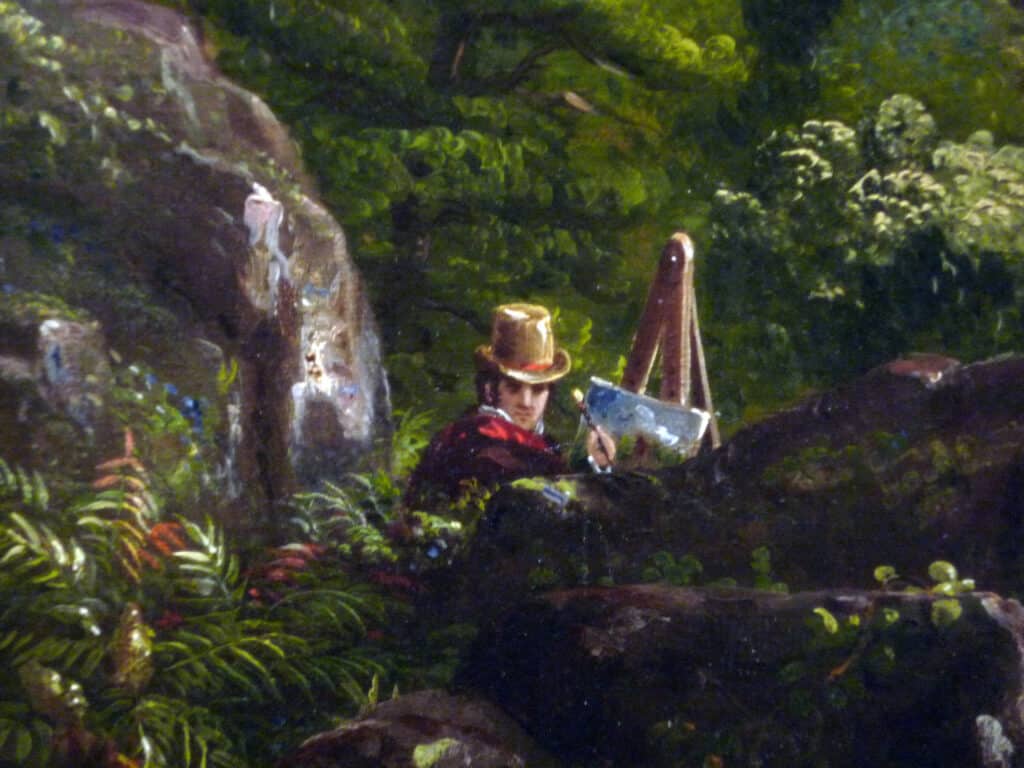Nature Journaling and Rendering
It is spring. Here up north, on the warmer days there is a sense of relief that winter is over and Easter is near. Thanks be to God.
Going with the grain
Always at school, we seek ways to go with the grain, not against it. What are the characteristics of children in my class, and how can I teach them well? And in like manner, what are the features of this season, and how do they lead to a natural unfolding of our topics of study? Spring is the perfect time for nature journaling, especially in those regions with pronounced seasons. Many a classroom teacher has asked students to list the signs of Spring. How much better it is to go outside and engage deeply with the created world: to run, to play, to put hands in the dirt, and also to see.
Attending to reality
One of the purposes of nature journaling is to train us to be attentive to reality. When I first go outside, I choose a simple plant with a few leaves — perhaps disappointed that I didn’t find something more interesting. But in time, with attention, I begin to see that this plant is a wonder. What do I notice? What do I wonder? What does it remind me of? And then, how much reality of this created object can I capture on paper? Drawings, words, and numbers all contribute to this capturing of reality.
The wise teacher prepares the class and carefully gauges the amount of time students can remain engaged in the activity. As students grow in interest, their stamina increases, and so does their capacity to attend to a thing. Teachers, advertisers, therapists, and lovers all know the value of attention. Spend just a moment considering this question: What if everyone had developed the stamina, the interest, and the discipline to attend to reality and faithfully render it back: in a drawing, in a written account, in a conversation? We would live in a very different society.
Rendering, justice, and worship
The word “render” comes from the Latin reddere meaning to give back, return, or restore. We take in reality through our senses of seeing, hearing, touching, smelling, and tasting (maybe on the tasting). We interact with this wonder of creation, and we give something back. We render, in this case draw, something on the sketch pad, and that is the nature study exercise. But the exercise naturally leads us — again, going with the grain — to another type of rendering. It leads us to worship, which is giving God His due.
At a time apart from nature journaling, presented as if it were something completely different, the thoughtful teacher can read to students the story of the young men cast into the fiery furnace (Book of Daniel, chapter 3). Despite Nebachudnezzar’s malevolent orders that should have brought about their destruction, the three youths, faithful to the one true God, were discovered to be alive and well, singing a beautiful canticle of praise to Him, completely unharmed by the flames. Their song is a rendering, giving back to God what He has first given us, with the most desirable addition of the love and praise of His children. If we pray this canticle with the children, often enough for it to sink into their memories, do not be surprised if one should start singing it during a session of nature journaling. Wait for them. Do not do it for them; leave room for the activity of the soul of the child. It also will go with the grain.
Begin
There are nature journalists galore sharing advice for getting started online. One of our favorites is John Muir Laws, and there are many others, including this enthusiastic naturalist. You, too, gather your materials, re-enter the garden this spring, and render what is due.


